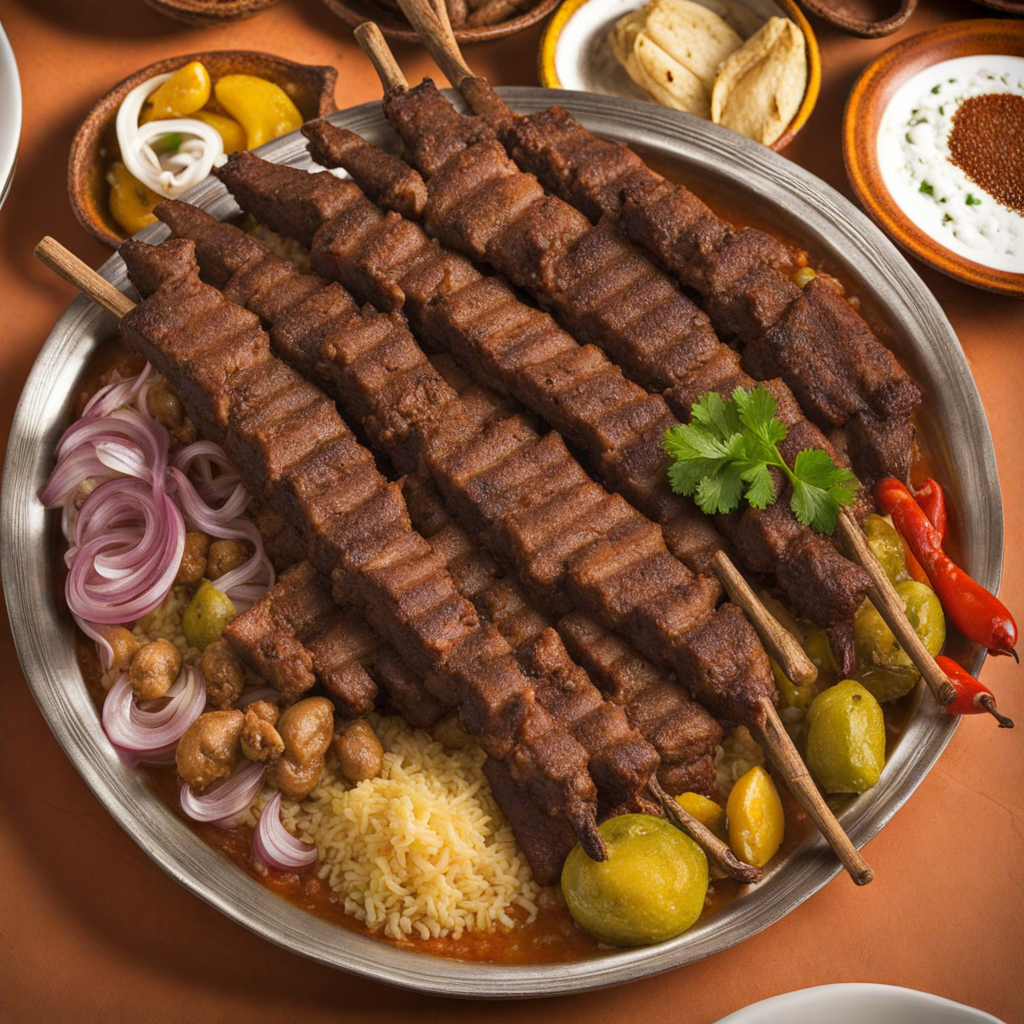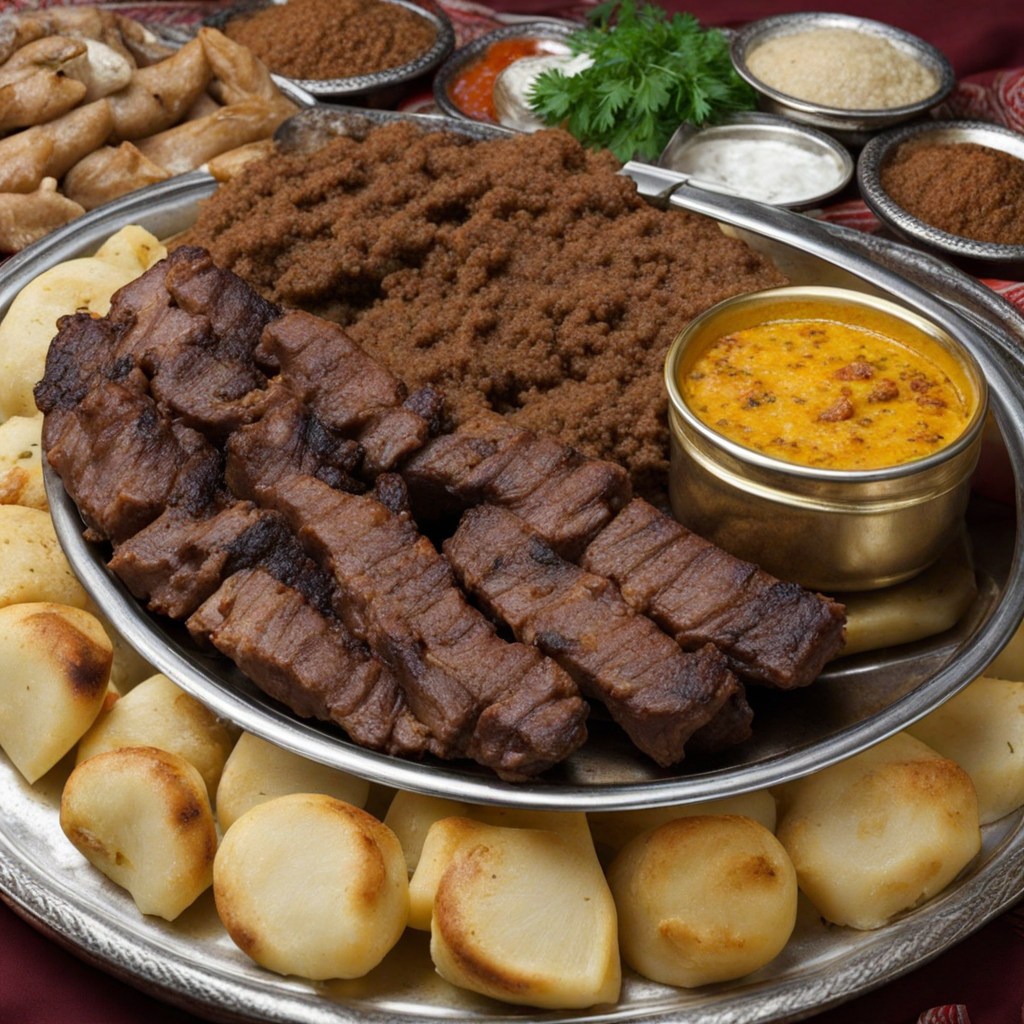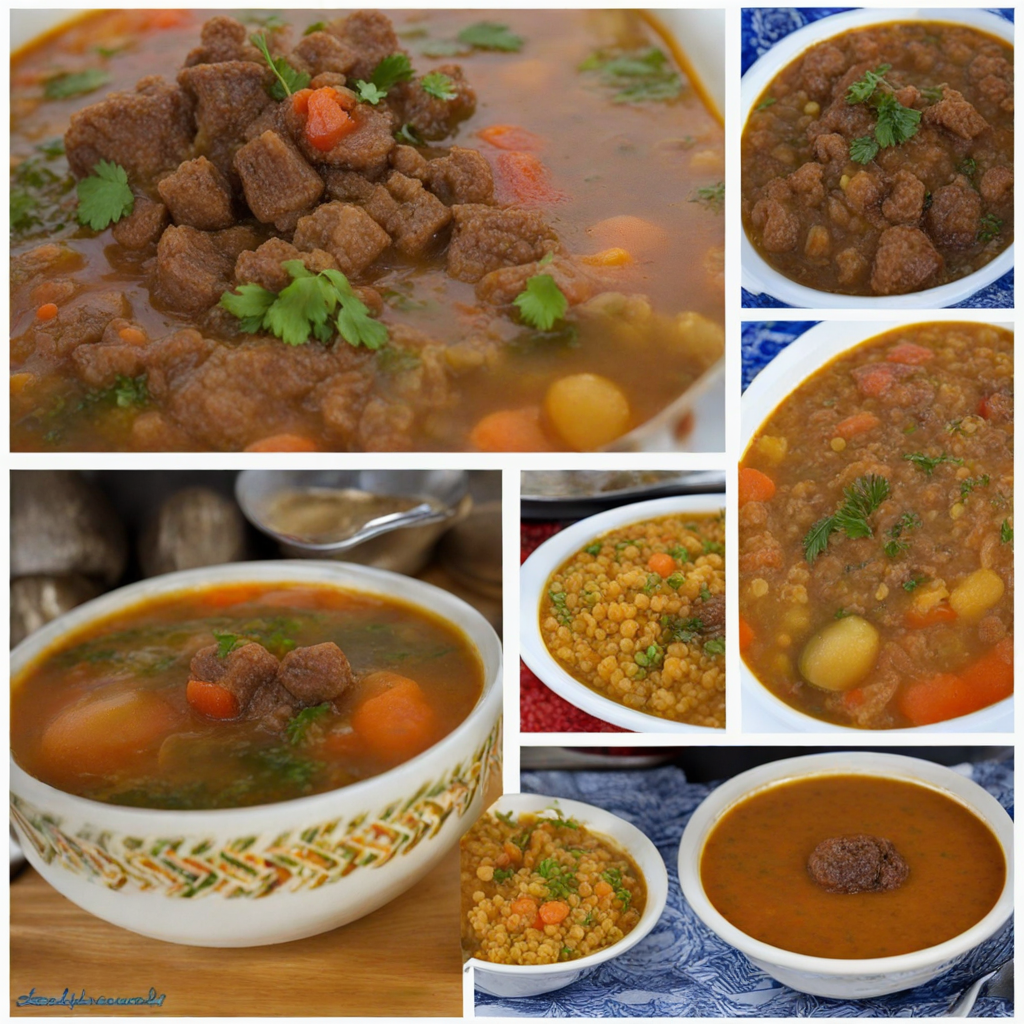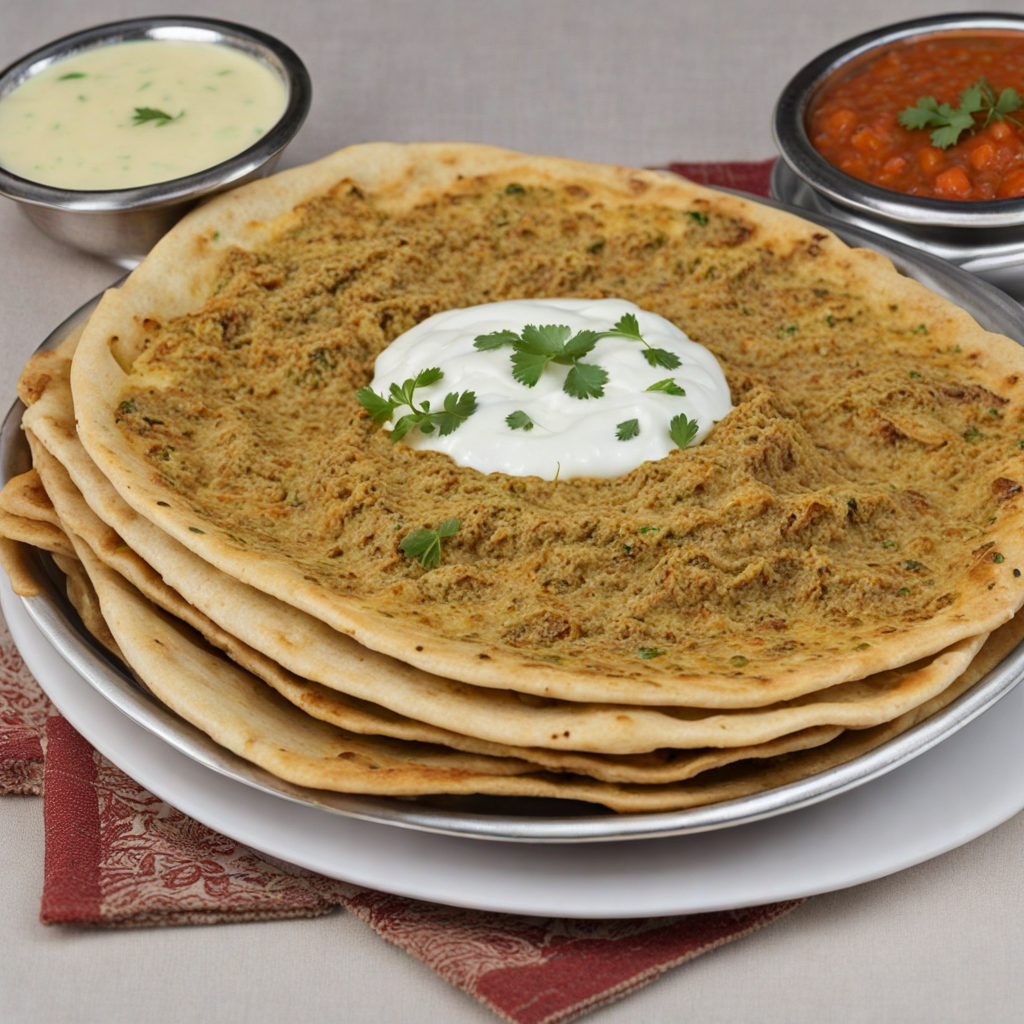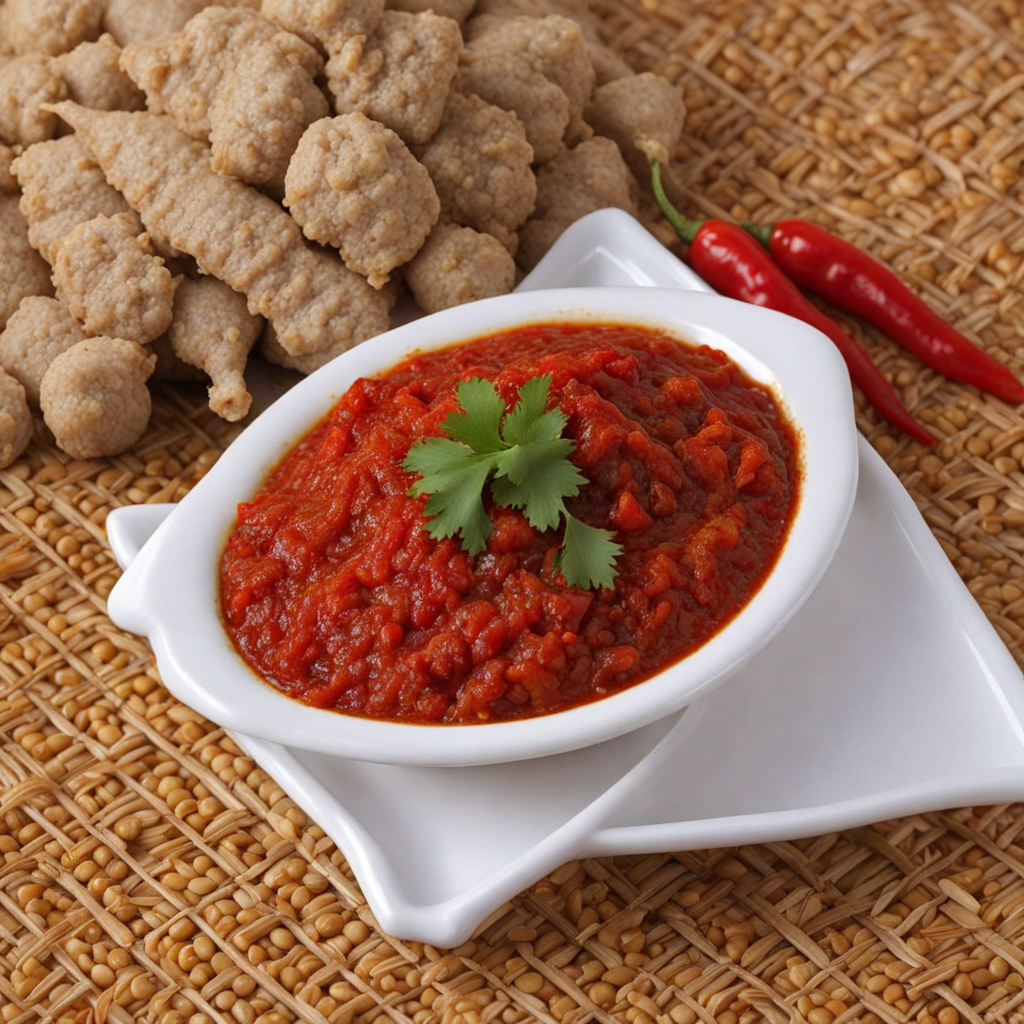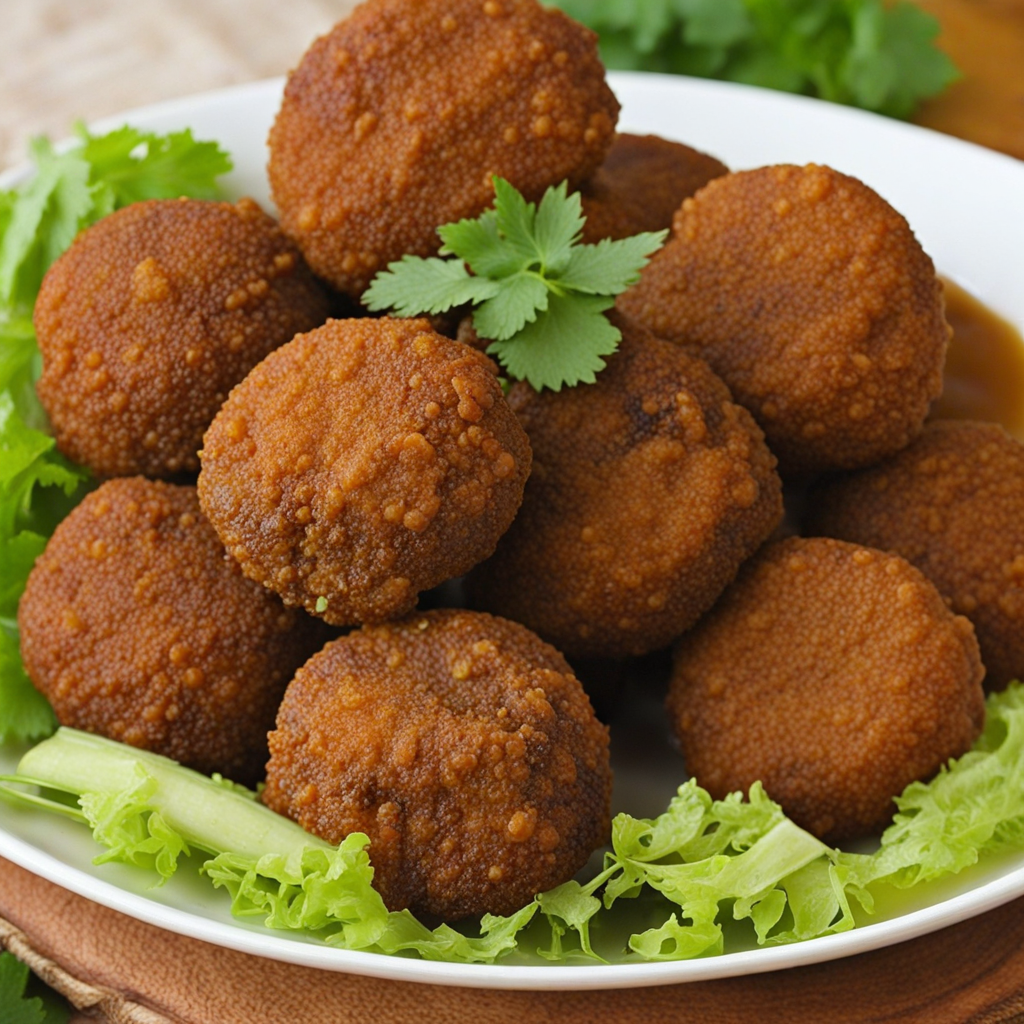Sheya
Sheya is a traditional Sudanese dish that showcases the rich culinary heritage of the region. This dish typically features tender, slow-cooked pieces of lamb or beef, often marinated with a blend of spices that reflect the diverse flavors of Sudanese cuisine. The meat is cooked until it is melt-in-your-mouth tender, allowing the spices to deeply penetrate, resulting in a savory and aromatic experience that is both satisfying and comforting. The use of spices such as cumin, coriander, and cinnamon creates a warm, inviting flavor profile that is unique to Sheya, making it a must-try for any food lover seeking new tastes. Accompanying the succulent meat, Sheya is often served with a side of traditional flatbread, known as kisra, which is perfect for scooping up the flavorful sauce and meat. Additionally, the dish may be complemented by a variety of side dishes, such as lentils or stewed vegetables, which add layers of texture and taste. The combination of the tender meat, the aromatic spices, and the hearty bread creates a balanced meal that is both nutritious and fulfilling, offering a true taste of Sudanese culture. The social aspect of enjoying Sheya should not be overlooked; it is often served during special occasions or family gatherings, making it a dish that brings people together. Sharing a plate of Sheya encourages communal dining, where everyone can partake in the rich flavors and experience the warmth of Sudanese hospitality. This dish not only tantalizes the taste buds but also embodies the spirit of togetherness, making it a delightful discovery for those looking to explore new culinary horizons.
How It Became This Dish
The History of شية (Shiya) in Sudan: A Culinary Journey #### Origins of شية (Shiya) The rich tapestry of Sudan’s culinary heritage is woven into the fabric of its history, culture, and geography. Among the myriad dishes that grace Sudanese tables, شية (Shiya) stands out as a symbol of community, tradition, and the art of cooking. Shiya, which translates to "grilled meat" in Sudanese Arabic, is not merely a dish; it is a celebration of flavors, a representation of Sudanese hospitality, and a testament to the nation’s agricultural bounty. The roots of Shiya can be traced back to ancient Sudan, a region historically characterized by its diverse ethnic groups and nomadic tribes. The Nilotic peoples, who have inhabited the area for millennia, engaged in pastoralism, relying heavily on livestock such as sheep, goats, and camels. The practice of grilling meat dates back to these early communities, who would use open fires, often fueled by local woods and grasses, to prepare their meals. This method of cooking allowed for the development of unique flavors, influenced by the herbs and spices native to the region. #### Cultural Significance of شية In Sudanese culture, food plays a pivotal role in social gatherings and celebrations. Shiya is often the centerpiece of family feasts, weddings, and communal events. The act of sharing a meal, particularly one as communal as Shiya, fosters bonds among family and friends. Traditionally, Shiya is enjoyed outdoors, accompanied by vibrant conversations and laughter, reinforcing its role as a dish that brings people together. The preparation of Shiya is also steeped in ritual. Marinated with a blend of spices such as cumin, coriander, and sometimes even chili, the meat is often skewered and grilled over an open flame. The grilling process itself is a communal activity, with family members participating in the cooking, each person adding their touch to the marination or grilling techniques. This collaboration not only enhances the flavors of the dish but also strengthens familial ties and cultural identity. Moreover, Shiya is often served with traditional accompaniments such as kisra (a type of fermented flatbread), salad, and various dips that can include spicy sauces or yogurt-based sides. The combination of flavors and textures creates a well-rounded meal that is both satisfying and reflective of Sudan’s diverse culinary influences. #### Development Over Time As Sudan navigated through various historical epochs, the dish of Shiya evolved along with its peoples and their lifestyles. The arrival of Islamic influences in the 7th century introduced new spices, cooking techniques, and even social customs that enriched Sudanese cuisine. Shiya became a dish that not only represented local traditions but also adapted to the tastes and preferences that emerged from Islamic culinary practices. The 19th and 20th centuries marked significant changes in Sudan’s socio-political landscape, impacting agricultural practices and food availability. Urbanization and the introduction of modern cooking appliances transformed how Shiya was prepared. While traditional grilling methods remained popular, the advent of charcoal and gas grills made the dish more accessible to urban dwellers. This shift did not diminish the cultural significance of Shiya; rather, it expanded its reach, allowing more people to partake in this beloved dish. In recent years, as globalization has influenced culinary practices worldwide, Sudanese cuisine, including Shiya, has gained visibility on the international stage. Sudanese expatriates and culinary enthusiasts have begun to showcase this dish in restaurants and food festivals abroad, creating a fusion of traditional and contemporary styles. Chefs have experimented with different marinades and cooking techniques, infusing Shiya with global flavors while maintaining its authentic essence. #### The Modern-Day Shiya Experience Today, Shiya continues to be a symbol of Sudanese identity and pride. It is commonly featured in gatherings that celebrate national holidays, religious festivities, and personal milestones. The dish has also become a point of cultural exploration for younger generations who are eager to preserve their heritage while embracing modern culinary trends. Food trucks and pop-up restaurants in urban areas are increasingly highlighting Shiya alongside other traditional Sudanese dishes, presenting it to a wider audience. The vibrant, smoky aroma of grilled meat wafting through the air captures attention and invites curiosity, making Shiya not only a meal but also an experience that embodies the warmth and spirit of Sudanese hospitality. Furthermore, social media has played a crucial role in the resurgence of interest in Shiya. Platforms like Instagram and TikTok have allowed home cooks and professional chefs to share their Shiya-making processes, showcasing the dish's appeal through vibrant visuals and engaging storytelling. This digital renaissance has sparked conversations about Sudanese cuisine, encouraging a younger generation to reconnect with their culinary roots while also inviting others to partake in the rich flavors of Sudan. #### Conclusion The journey of شية (Shiya) from its ancient origins to its contemporary manifestations is a reflection of Sudan’s dynamic culture and history. It serves as a reminder of the ties that bind families and communities, transcending generations through shared meals and stories. As Sudan continues to navigate an ever-changing world, Shiya remains a culinary emblem of resilience and tradition, inviting all to savor not just the flavors of the dish, but the rich heritage it represents. In essence, Shiya is more than just grilled meat; it is a culinary narrative that encapsulates the heart and soul of Sudan. It continues to evolve while holding steadfast to its roots, offering a delicious glimpse into a culture that values community, tradition, and the joy of sharing food. Whether enjoyed in the heart of Khartoum or at a family gathering in a remote village, Shiya remains a beloved dish that nourishes both body and spirit, celebrating the essence of Sudanese life.
You may like
Discover local flavors from Sudan


